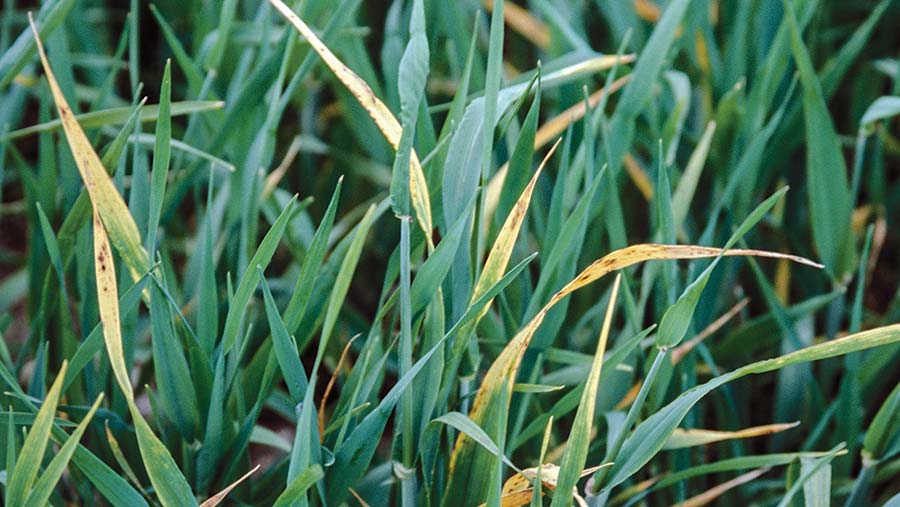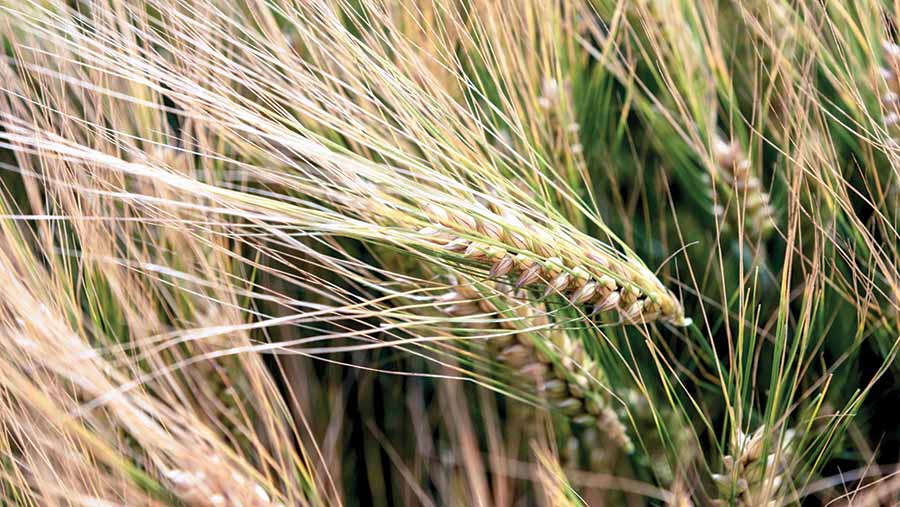Barley breeders have BYDV solution to neonic ban
 © Blackthorn Arable
© Blackthorn Arable Barley varieties that are tolerant to a key viral disease could help farmers reduce yield losses when growing barley without neonicotinoid seed treatments.
Two breeders are investigating barley varieties in the UK that can tolerate barley yellow dwarf virus (BYDV), which could reach farms in the next couple of years.
The disease, which is spread by aphids, can result in significant yield losses, especially with early infections leading to plant death.
See also: How a neonic ban will affect beet and cereal growers
Bird-cherry and grain aphids, which both spread the disease, can be successfully managed by the use of neonicotinoid seed treatments.
However, this autumn will be the last time farmers will be able to use them as the EU extends a ban on three neonicotinoid pesticides to cereals and sugar beet.
While bird-cherry aphids are still well controlled by pyrethroid sprays, there are resistance problems in grain aphids.
Therefore, varietal tolerance could have a future role in barley, with varieties already being grown in France, where BYDV is a bigger problem.
Varietal tolerance is especially valuable when considering that later drilling, which can help reduce BYDV risk in wheat, is not an option for barley.
There are already tolerant varieties and Will Compson, sales and cereals manager at KWS, says the company is releasing Amistar commercially in Autumn 2019 on a limited basis with pilot growers.
So how does Amistar work? KWS barley breeder David Harrap explains that it contains a tolerance gene. This means plants will still get infected, but will tolerate the virus and grow normally.
“The YD2 gene has been around since the 1960s and was commercially available, but died a death as there was no interest,” he says.
However, growing concerns over the future of neonicotinoid seed treatments have brought an acceleration of work to introduce BYDV tolerance, especially in the past two years.
Variety performance
John Miles, KWS product development manager, says that in trials Amistar has been impressive, giving similar yields to Tower.
The variety is in its second season of strip trials in higher BYDV risk areas from south Wales to East Sussex.

© Andrew Watts
He highlights one trial in East Anglia where there was a 10-15% loss of yield in a standard variety because of natural infection. Amistar lost just 0.5% in the same area, in what he describes as a medium risk year.
Mr Harrap points out that you can still get leaf yellowing, but with no significant effect on yield.
However, Mr Miles says farmers may still need to manage aphids.
“You still get the virus circulating, as the gene does not break the lifecycle,” he says. “Therefore, farmers may still need to manage aphids to reduce the risk of virus spread to neighbouring crops of wheat and barley.”
Looking ahead, Mr Miles believes tolerant varieties will appeal to farmers on high risk sites such as the south coast. He suggests that for the first few years, they may be used as a tool on headlands, as aphids come in from the headlands.
It could also have a role in buffer zones around watercourses, so farmers can make more use of no-spray zones
Variety pipeline
There are more varieties in the KWS pipeline, including two-rows, and Mr Harrap believes there will be a substantial move to BYDV tolerance in coming years.
“It will be a trait that we will see more of in pretty much everyone’s breeding programmes.”
There is little risk of resistance developing in the aphid population, he says, so it will be around for some time.
Fellow breeder Limagrain is trialling a six-row with BYDV tolerance that is already being grown on the continent, from its Belgian breeding programme.
The variety, Rafaela, is vigorous and early to mature, making it an ideal entry to oilseed rape, says arable technical manager Ron Granger.
Cereals product manager Les Daubney says that in trials last year, it performed as well as other six-rows, sitting at the bottom end of the hybrids.
The company is still testing its performance and it should be commercially available from next autumn, in time for when Deter is no longer available.
“Breeding efforts have accelerated and two-rows are about one or two years away from entering national list trials,” he says.

